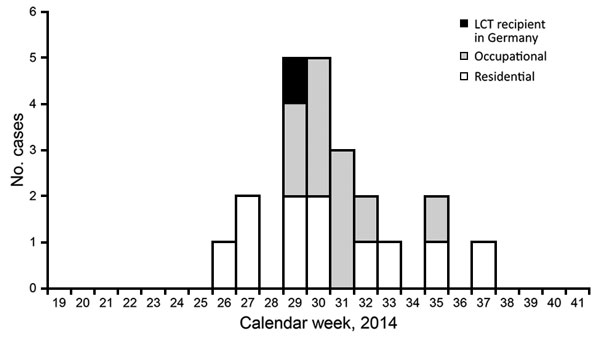Volume 23, Number 7—July 2017
Research Letter
Live Cell Therapy as Potential Risk Factor for Q Fever
Figure

Figure. Residential (n = 11), occupational (n = 10), and recipient (n = 1) cases of Q fever related to live cell therapy (LCT), by week of symptom onset compatible with Q fever, Rhineland-Palatinate, Germany, 2014.
Page created: June 19, 2017
Page updated: June 19, 2017
Page reviewed: June 19, 2017
The conclusions, findings, and opinions expressed by authors contributing to this journal do not necessarily reflect the official position of the U.S. Department of Health and Human Services, the Public Health Service, the Centers for Disease Control and Prevention, or the authors' affiliated institutions. Use of trade names is for identification only and does not imply endorsement by any of the groups named above.